Menus

Kawasaki

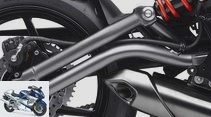
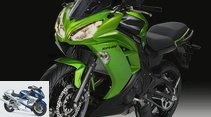

20th photos
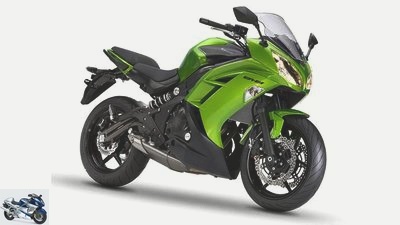
Kawasaki
1/20
Kawasaki is giving its ER-6 models visual and structural updates for 2012.
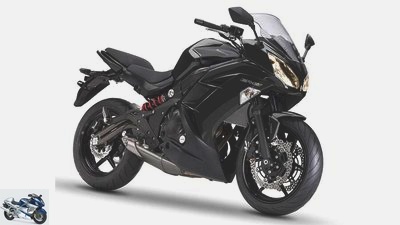
Kawasaki
2/20
From 2012, the look of the new Kawasaki ER-6f is more reminiscent of its big ninja sister.
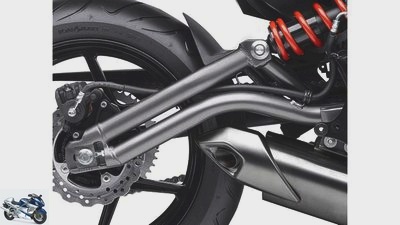
Kawasaki
3/20
Kawasaki ER-6n / f: The parallel steel tubes on the frame and swing arm create a unique appearance.
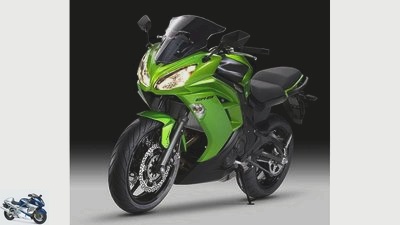
Kawasaki
4/20
The Kawasaki ER-6 models receive the latest generation of ABS.
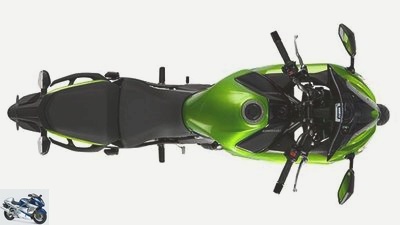
Kawasaki
5/20
Kawasaki ER-6f
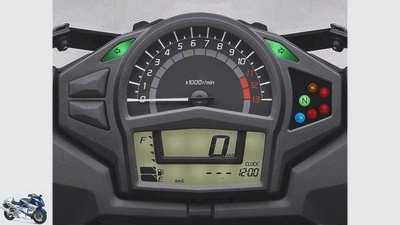
Kawasaki
6/20
Kawasaki ER-6f cockpit.
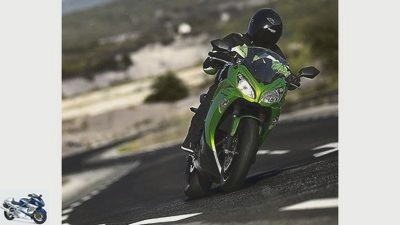
Kawasaki
7/20
Kawasaki ER-6f
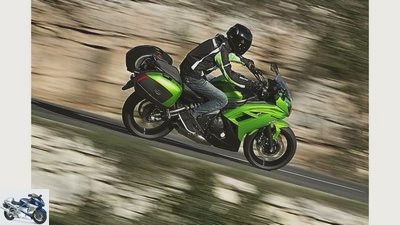
Kawasaki
8/20
With the optional luggage set, the Kawasaki ER-6f becomes a sporty mid-range tourer.
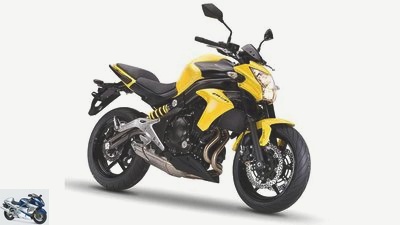
Kawasaki
9/20
Kawasaki ER-6n performance data (manufacturer): 72.1 HP at 8500 rpm and 64 Nm at 7000 rpm.
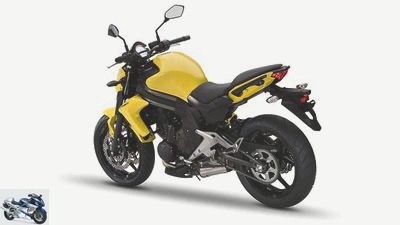
Kawasaki
10/20
Kawasaki ER-6n weight (ready to drive according to the manufacturer): 206 kg
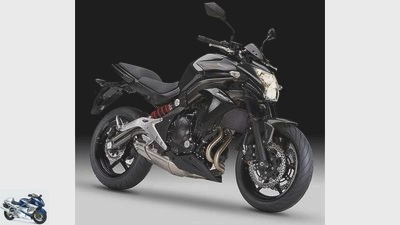
Kawasaki
11/20
Kawasaki ER-6n tank capacity (manufacturer information): 16 liters
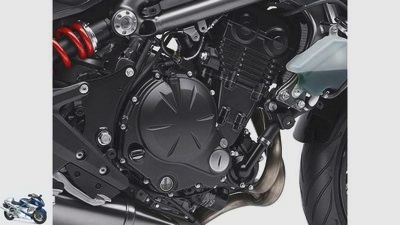
Kawasaki
12/20
The Kawasaki ER-6n / f is powered by an in-line twin cylinder with a displacement of 649 cm³.
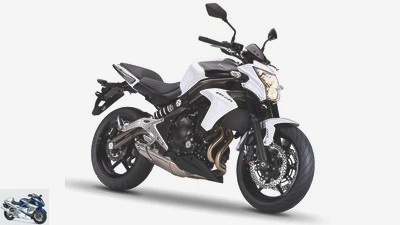
Kawasaki
13/20
Kawasaki ER-6n
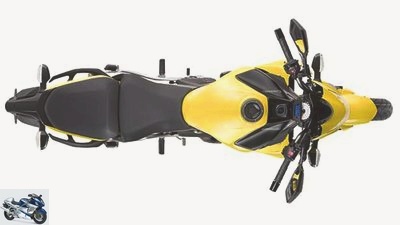
Kawasaki
14/20
Kawasaki ER-6n

Kawasaki
15/20
Kawasaki ER-6n with passenger-friendly handles at the rear.
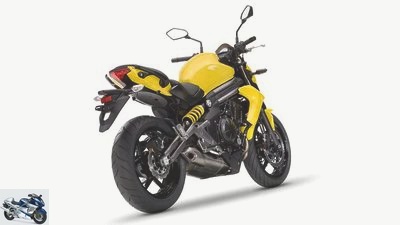
Kawasaki
16/20
Kawasaki ER-6n
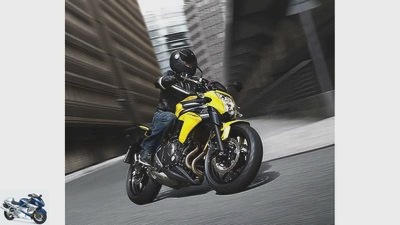
Kawasaki
17/20
Kawasaki ER-6n
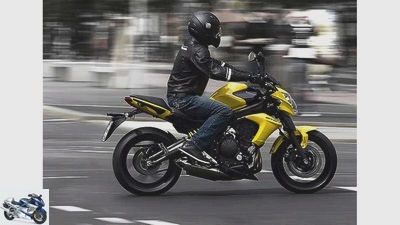
Kawasaki
18/20
Kawasaki ER-6n
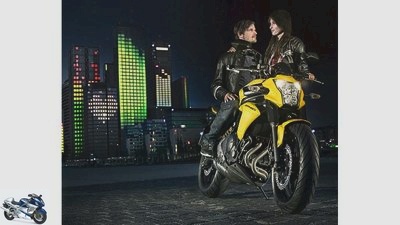
Kawasaki
19/20
Kawasaki ER-6n
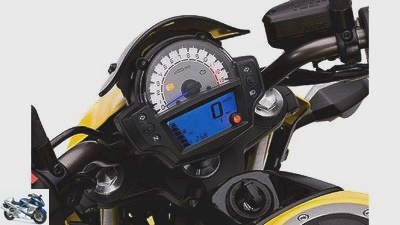
Kawasaki
20/20
Kawasaki ER-6n cockpit.
Driving report: Kawasaki ER-6n 2012
Kawasaki is redesigning its bestselling naked bike
Kawasaki’s successful ER-6 models with the 650 in-line engine will be launched in 2012 as the third generation, extensively revised. It starts with the naked, jagged ER-6n.
Under the warm sun of the Algarve in Portugal, a lemon-yellow motorcycle is parked between pine, palm and eucalyptus trees. Striking and yet known. Kawasaki’s ER-6n, which was completely renovated for 2012, stands casually on the side stand. She looks more sleek and sharper from the shortened lamp mask around the two stacked headlights. It should be stylish, the third edition, an elegant street fighter for the people. Flowing forms wherever the eye looks. Up to the two artfully curved bends and the perfectly shaped one-piece footrest system. The most striking and most important innovation of both ER-6 types – including the half-clad ER-6f – is the completely redesigned tubular steel frame. Now two parallel pipes run over the 650 in-line engine. Even the curved swing arm with now higher quality chain tensioners is made in the new double tube construction. The 2012 ER-6 has a single support made of rectangular tubing between the front and rear frames.
D.his narrower cut of the midframe makes the waist nice and slim. Even smaller pilots can reach the ground safely with both feet thanks to the shorter stride length. That conveys security, gives a good feeling. The now two-part bench is padded thicker, the driver’s seat contoured more comfortably. In the rear part, its support surface is wider. Get on and feel good. The handlebars, which are mounted in rubber and widened by two centimeters, are close at hand. As with the Z 1000, the ignition lock is now in a recess in front of the steel tank two centimeters higher. The engine growls to life with a grumpy sound from the stainless steel exhaust under the engine. It now has more volume and rises more steeply to the rear. The engine sucks in air with a dull pounding, from intake pipes on the left and right between the frame pipes.
Buy complete article
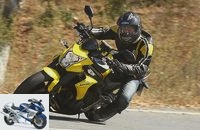
Driving report: Kawasaki ER-6n 2012
Kawasaki is redesigning its bestselling naked bike
The instruments of the Kawasaki – classic white background.
The chassis is very lively. This motorcycle drives almost by itself and is very easy to circle around potholes and zebra crossings. Driving in the river. The handy, not overhanded Kawa folds down easily in an inclined position. She never gets nervous. The newly tuned spring elements fish a lot from rough asphalt surfaces. The compromise between suspension comfort and (top speed) stability is a complete success. With the new model, softer, longer springs meet adapted damping. As usual, the directly hinged spring strut on the right is easily accessible. Dunlop’s brand new Rodsmart II offers a lot of liability and feedback. The ER-6n is the world’s first motorcycle to carry these original tires ex works.
Suddenly a big dog runs into the street, barking loudly. Does he not like motorcycles? Or no kawas? Anyway, an emergency stop is the order of the day. The three brakes grip easily and are powerful enough. At the front, double-piston floating calipers bite the wave brake discs. In the variant driven here without ABS, at least with more snappy pads. The machines come to Germany exclusively with a revised ABS. The more powerful, lighter control unit should enable finer control intervals and better braking distances. Phew, today it went well without the anti-lock device.
Continue. The view sweeps over the easy to read, classic white highlighted tachometer. Directly below, liquid crystals show a lot of information: speed, fuel level, time. In addition, the ER-6n has two trip meters and shows, brand new, the remaining kilometers as well as the fuel consumption (current and average) and provides data on economical driving style. The tank, which was enlarged from 15.5 to 16 liters, should allow the well-known economical twin large ranges. At least smaller pilots can withstand a long time in the saddle. You drive with a great overview, enjoy every passage through the village, every freshly peeled cork oak. A passenger likes to ride with you thanks to the comfortable knee angles and new grips.
Despite the streetfighter attitude, the suitability for everyday use and practical use are just right: Both hand levers are adjustable, the rear is equipped with luggage hooks. A point of honor are hazard lights, small inner fenders, full-surface shielding plastic protectors for the fork tubes and fine reservoirs for the brake fluid. Kawasaki has lifted the payload to 200 kilograms, 20 more than before. The valve clearance check is only faced with short 6000 maintenance intervals after 42000 kilometers. There is an inexpensive 34 hp variant for novice drivers: A stop limits the opening angle of the second, mechanically operated throttle valve. Unfortunately, the underfloor exhaust prevents a main stand. But the processing quality of the 650s built in Thailand is quite convincing, the welds are okay.
From January (ER-6n) and February 2012 (ER-6f) the Kawasakis will be available in stores. Their price will probably be slightly higher than the previous tariffs of 6,995 and 7,395 euros. The first two generations of ER-6n and f found over 60,000 buyers in Great Britain, France, Italy, Spain and Germany alone. In 2011, the ER-6n and f are in second place in the German sales statistics, behind the R 1200 GS. So there was hardly any acute need for action for a revision. Nevertheless, Kawasaki has simply improved its top sellers for the 2012 season. Commendable. Because everything great in life arises because someone does more than he needs to. Now the ER-6n looks even more valuable, balanced and adult. Dynamic and good.
Overview of changes
Kawasaki
Kawasaki ER-6n: New frame, new swing arm, modified ergonomics and a motor with more torque. This is the technical progress of the ER-6. You can see the optical one here.
New double tube frame
Two parallel pipes above the engine (the frame used to fork, the lower pipe ran along the side of the engine). Rear frame as a slim backbone construction.
Swing arm also in a new double tube construction
She wears higher quality chain tensioners.
New spring elements
Length and travel of the shock absorber five mm longer; the front fork is 15 mm longer with five mm longer travel. Front and rear softer springs with adapted damping. Wheelbase, caster and steering head angle slightly larger.
The silencer stands a bit steeper, has more volume in the front right and wears new cats.
Interference tube between the manifolds, together with new mapping and a larger exhaust, should deliver more torque below 7000 rpm.
Intake ducts are now between the frame tubes.
New instruments sit further back, over the handlebars. New functions: remaining kilometers, current and average fuel consumption and a display for economical driving style. The ignition lock is now in front of the tank.
More compact ABS control unit with a further developed processor for finer ABS control.
Headlight mask more compact: shorter and slimmer. Below that, new plastic protectors completely shield the fork stanchions.
Bigger tank
The steel tank is 20 mm higher; Volume 16.0 instead of the previous 15.5 liters.
ergonomics
Handlebar is two centimeters wider than before. Driver and pillion seat now in two parts with thicker padding for more comfort. Redesigned passenger grab bars.
New radiator covers look narrower when viewed from the front. The front indicators, which were previously integrated into the radiator cover, are now located on the side of the lamp mask.
Rear fairing 10 mm shorter, redesigned LED rear light.
Air filter with paper filter insert (previously oil-soaked foam).
Payload of 200 kg increased rear frame and front rim more stable.




20th photos
Pictures: Driving report: Kawasaki ER-6n 2012
To home page
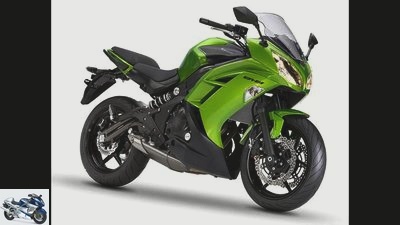
Kawasaki
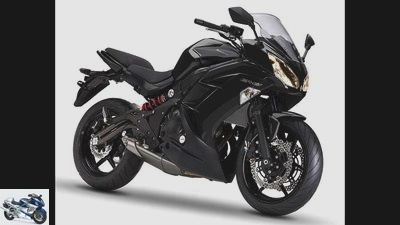
Kawasaki
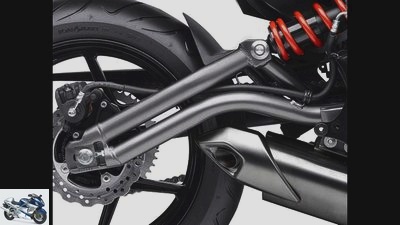
Kawasaki
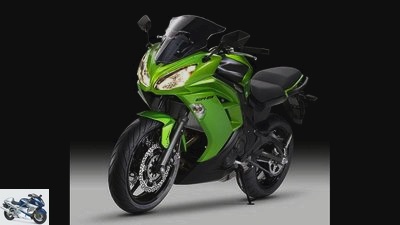
Kawasaki
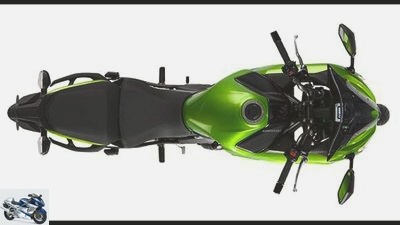
Kawasaki
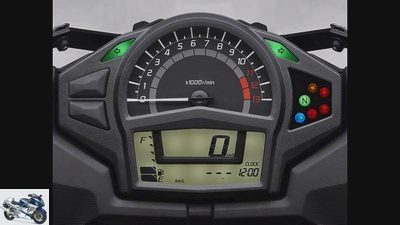
Kawasaki
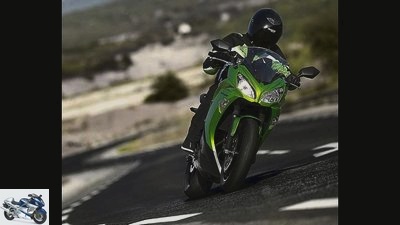
Kawasaki
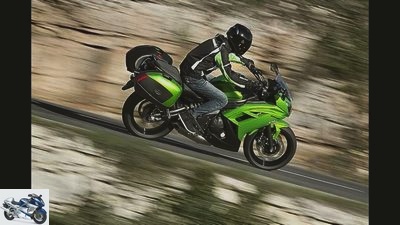
Kawasaki
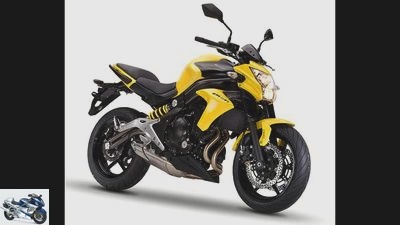
Kawasaki
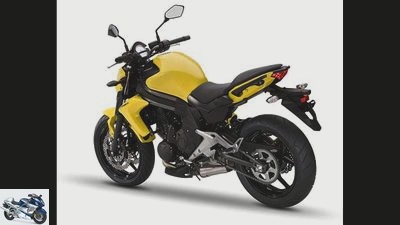
Kawasaki
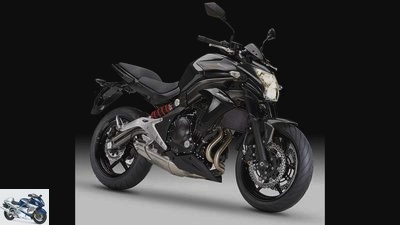
Kawasaki

Kawasaki
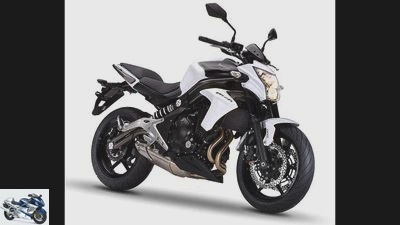
Kawasaki
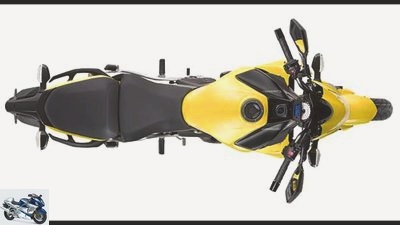
Kawasaki
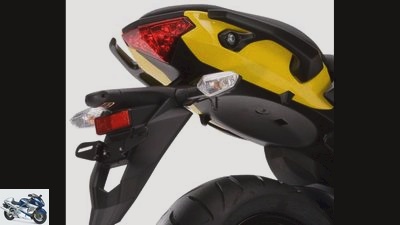
Kawasaki
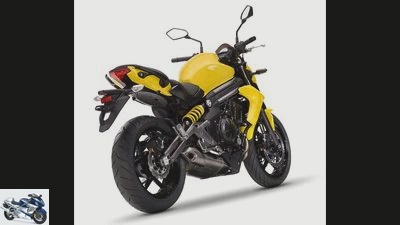
Kawasaki
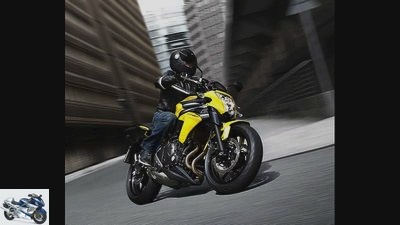
Kawasaki
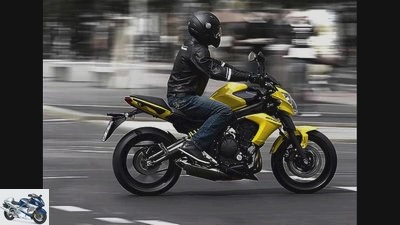
Kawasaki
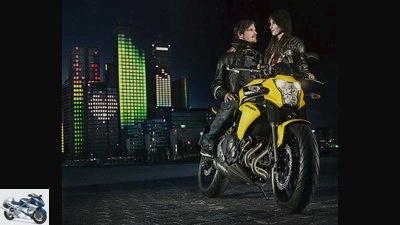
Kawasaki
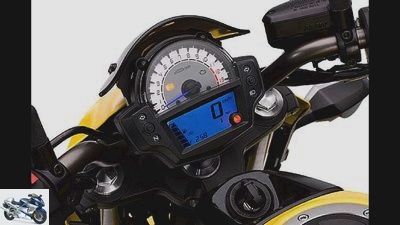
Kawasaki
Technical specifications
Kawasaki
Kawasaki ER-6n performance data (manufacturer): 72.1 HP at 8500 rpm and 64 Nm at 7000 rpm.
engine
Water-cooled two-cylinder four-stroke in-line engine, a balance shaft, two overhead, chain-driven camshafts, four valves per cylinder, bucket tappets, wet sump lubrication, injection, Ø 38 mm, regulated catalytic converter, 336 W alternator, 12 V / 14 Ah battery, mechanically operated multi-disc oil bath clutch , Six-speed gearbox, O-ring chain, secondary ratio 46:15.
Bore x stroke 83.0 x 60.0 mm
Displacement 649 cc
rated capacity 53.0 kW (72 hp) at 8500 rpm
Max. Torque 64 Nm at 7000 rpm
landing gear
Bridge frame made of steel, telescopic fork, Ø 41 mm, two-arm swing arm made of steel, spring strut, directly hinged, adjustable spring base, double disc brake at the front, Ø 300 mm, double-piston floating calipers, disc brake at the rear, Ø 220 mm, single-piston floating caliper, ABS.
Cast aluminum wheels 3.50 x 17; 4.50 x 17
tires 120/70 ZR 17; 160/60 ZR 17
Dimensions + weights
Wheelbase 1410 mm, steering head angle 65.0 degrees, caster 110 mm, suspension travel f / h 125/130 mm, seat height 805 mm, weight with a full tank * 206 kg, permissible total weight 406 kg, tank capacity 16.0 liters.
guarantee two years
Colours Yellow, black, white
Performance variants 25 kW (34 PS)
price k. A..
Related articles
-
Suzuki Gladius and Kawasaki ER-6n in comparison test
Blacksmith 16 photos Jahn 1/16 Suzuki Gladius and Kawasaki ER-6n in comparison test. Which of the 650 twin-cylinder has the edge in the end? Jahn 2/16…
-
Gargolov 20th photos Kawasaki 1/20 Kawasaki 2/20 Kawasaki 3/20 Kawasaki 4/20 Kawasaki 5/20 Kawasaki 6/20 Kawasaki 7/20 Kawasaki 8/20 Kawasaki 9/20…
-
Triumph, Harley Davidson, Kawasaki and Honda Cruiser in the test
Jahn Chopper from Triumph, Harley Davidson, Kawasaki and Honda put to the test Comparative test of mid-range cruisers up to 9,000 euros In the cruiser…
-
Kawasaki Z 1000 – model years 2004 and 2014 in a comparison test
fact 16 pictures fact 1/16 memories of the old Z 900 and Z 1000 times were made possible by the “four-in-two-in-four exhaust system” with its four …
-
BMW F 800 R, Kawasaki Z 800, MV Agusta Brutale 800 and Yamaha FZ8 in the test
Jahn 29 photos Jahn 1/29 A comparison of four 800 class motorcycles: BMW F 800 R, Kawasaki Z 800, MV Agusta Brutale 800 and Yamaha FZ8. Jahn 2/29 Like…
-
Kawasaki Z 650 in the driving report
Kawasaki 9 pictures Kawasaki 1/9 picture gallery: Kawasaki Z 650 in the driving report. Kawasaki 2/9 The diet worked: Compared to the ER-6n, the Z 650 has …
-
Kawasaki ER-6n and KTM 690 Duke in comparison
14th photos 1/14 Two middle class naked bikes in the verifying test. In the end, who is ahead of the game – the Kawasaki ER-6n…
-
Jahn Top test Kawasaki Ninja ZX-9R New game New luck? Plagued by chassis weaknesses after the last overhaul two years ago, the Kawasaki engineers have…
-
Honda CB 1100 RS, Kawasaki Z 900 RS and Yamaha XSR 900 in the test
bilski-fotografie.de 31 photos bilski-fotografie.de 1/31 The Honda CB 1100 RS. bilski-fotografie.de 2/31 A feast for the eyes: Visually, the Honda is…
-
Cruiser comparison test: Honda VTX 1300 S, Kawasaki VN 1600 Classic
Cruiser comparison test: Honda VTX 1300 S, Kawasaki VN 1600 Classic Damn long and heavy Handy six-centimeter chunks, wheelbases begging for parking bay, …